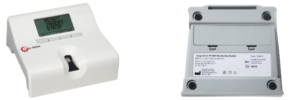A Diagnosis of Atrial Fibrillation
A diagnosis of atrial fibrillation (AF) raises the risk of stroke four to five times. In 2010, 33.5M people worldwide had AF. Five million new people receive the diagnosis annually. In the US alone, the rate of AF is projected to double from 1.2M to 2.6M cases by 2030. This will increase the economic and public health burden mostly due to the rate of hospitalizations. The prevalence of AF in the general population is estimated at approximately 1% and associated with increasing age. Men are impacted at a higher rate than women. How do you care for a patient with AF?
Risk Factors
There are several risk factors to consider that are associated with AF. These include hypertension, diabetes, obstructive sleep apnea, obesity, alcohol intake, and congestive heart failure. But the good news is that if any of the underlying conditions are modified, the risk for AF declines.
Management using Anticoagulation Therapy
To care for patients with AF, one method to use is anticoagulation therapy. Studies demonstrate the risk of stroke decreases with use of the oral vitamin K antagonist (Warfarin) therapy. However, patients on Warfarin need regular monitoring so dosing remains within the therapeutic range. While this is challenging, point-of-care and patient self-testing has been proven to be effective in improving clinical outcomes in an outpatient care setting. The Coag-Sense® PT/INR Monitoring System contains everything a patient needs to successfully monitor anticoagulation at home including a meter, lancets, and test strips. Because of its portability, the same meter can be used from point-of-care to the home ensuring a seamless experience for patients and eliminating variances in test results.



